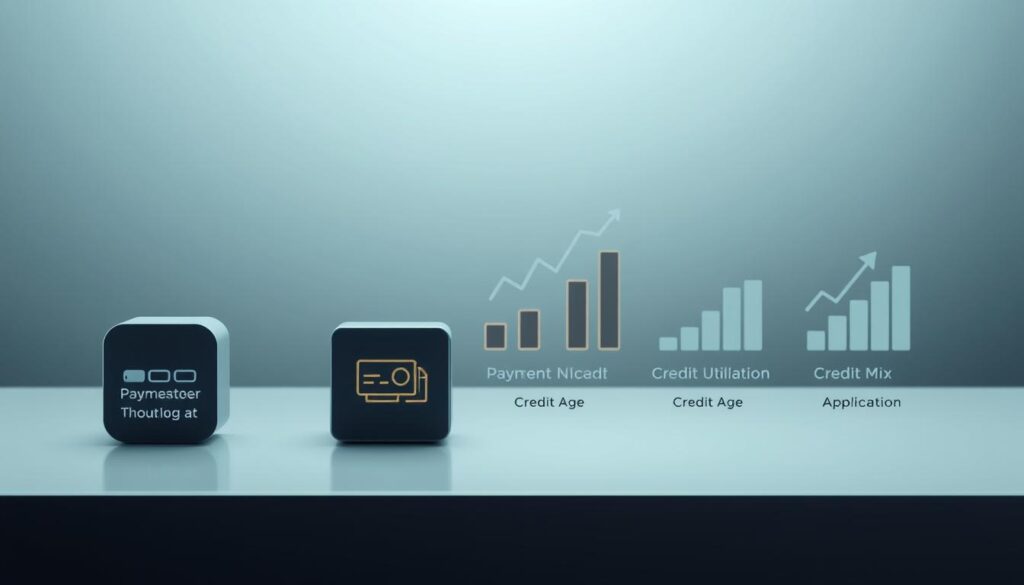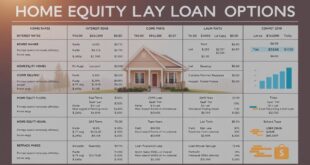Juggling multiple bills can feel like spinning plates. If you’re dealing with high-interest credit card balances or other financial obligations, there’s a smarter way to organize your money. Imagine replacing chaotic due dates with one predictable payment each month – that’s the power of combining debts into a single solution.
Many Americans have found relief through this approach. For example, Discover offers personal solutions up to $40,000 designed specifically to simplify repayment. Research shows 88% of users expect to eliminate their balances faster with this strategy – and you could too.
This guide walks you through everything from basic concepts to advanced payoff tactics. We’ll explore how merging debts might lower your interest costs, share real success stories, and break down the process into easy steps. No financial jargon – just clear, actionable advice.
Whether you’re tackling medical bills or store cards, you’ll discover practical ways to take control. Let’s turn overwhelming payments into a manageable plan that works for your budget and timeline.
Key Takeaways
- Combine multiple payments into one fixed monthly amount
- Potentially reduce interest costs by thousands of dollars
- 88% of users report faster debt payoff timelines
- Access up to $40,000 for qualifying applicants
- Learn strategies to avoid common financial pitfalls
Understanding the Basics of Debt Consolidation
Managing multiple payments often feels like solving a puzzle with missing pieces. Debt consolidation helps align those pieces into a clear financial picture. Let’s break down how this strategy works and why it might fit your situation.
What Is Debt Consolidation?
This approach combines several high-interest balances into one new account. Instead of tracking five different due dates, you make one predictable payment monthly. The goal? Simplify your routine while potentially lowering interest costs.
Two Paths to Financial Clarity
Most people choose between two methods:
| Feature | Balance Transfers | Personal Loans |
|---|---|---|
| Interest Rates | 0% intro APR (12-18 months) | Fixed rates (6-36%) |
| Repayment Timeline | Short-term focus | 2-7 years |
| Credit Impact | Requires good credit | Builds credit history |
| Fees | 3-5% transfer fee | 0-6% origination fee |
Balance transfers work best for quick payoffs, while personal loans offer longer timelines. Both options help lower credit utilization – a key factor in credit scores. By paying off card balances, you maintain available credit without closing accounts.
Many worry consolidation creates more debt. In reality, it’s a restructuring tool. As financial expert Jane Doe notes: “Successful users treat this as a reset button, not permission to spend more.” Regular payments and budget adjustments remain essential for lasting results.
What Are Consolidation Loans?
Dealing with financial chaos often starts with simplifying the complex. A consolidation loan merges multiple debts into one manageable solution. Unlike balance transfers or credit counseling, this approach uses a fixed-rate personal loan to pay off existing obligations.
Key Features and Benefits
These financial tools stand out through predictable payments. Your interest rate stays locked in, shielding you from market changes. Borrowers typically access $2,500 to $40,000 – enough to cover most credit card balances or medical bills.
Repayment plans stretch from 3 to 7 years. This flexibility lets you pick a timeline matching your budget. “The right terms turn overwhelming debt into achievable milestones,” notes financial planner Mark Thompson.
No collateral? No problem. These unsecured options work for renters and homeowners alike. Funds often arrive within a business day after approval – faster than most debt management programs.
While settlement plans negotiate reduced balances, consolidation focuses on full repayment. This responsible approach helps maintain credit health while streamlining your financial life. You’ll trade scattered due dates for a single monthly commitment, potentially saving hundreds in interest fees.
Benefits of Using a Debt Consolidation Loan
Financial clutter isn’t just stressful—it costs you time and money. Merging multiple balances into a structured plan creates breathing room in your budget. Picture trading unpredictable minimums for predictable progress. This approach helps you regain control while keeping more cash in your pocket.
Lower Monthly Payments and Reduced Financial Stress
High-interest accounts eat into your budget like uninvited guests. By securing a fixed-rate solution, you could slash interest costs by half or more. For example, swapping five credit cards at 22% APR for one account at 11% APR saves $3,200 on a $10,000 balance over three years.
Single payments eliminate calendar chaos. No more guessing which bill needs attention first. Budgeting becomes straightforward when you know exactly what’s due each month—no surprise adjustments.
Simplifying Multiple Debts into One Fixed Payment
Juggling due dates is like playing whack-a-mole with your paycheck. One automated payment means fewer missed deadlines and late fees. You’ll also see progress faster—like watching a thermometer rise as your balance drops.
This structure frees up funds for emergencies or savings. As financial coach Lisa Green explains: “Clients often find an extra $200 monthly when they stop feeding multiple interest charges.” That money could build a safety net or accelerate your payoff timeline.
How Debt Consolidation Loans Improve Your Financial Health
Your financial well-being thrives on smart organization—like replacing scattered debts with a strategic plan. By aligning payments and optimizing costs, you create lasting stability. Let’s explore how this approach reshapes your money management.
Impact on Interest Rates and Loan Terms
Combining debts often introduces a fixed interest rate that shields you from market hikes. Unlike variable credit card APRs, predictable payments make budgeting simpler. For example, locking in a 9% rate instead of paying 22% on cards could save $150 monthly on a $15,000 balance.
Payment timelines (36-84 months) let you choose speed versus affordability. Shorter terms mean higher monthly payments but lower total costs. Longer plans ease cash flow while building credit history through consistent repayments.
| Term Length | Monthly Payment | Total Interest |
|---|---|---|
| 36 months | $478 | $2,208 |
| 60 months | $311 | $3,660 |
| 84 months | $241 | $5,244 |
Paying off cards through this method can boost your credit score by 40+ points. How? It slashes credit utilization—the percentage of available credit you use. Experts recommend keeping this below 30% for optimal scoring.
“A lower rate grabs attention, but always calculate total repayment costs. Sometimes a slightly higher rate with shorter terms saves more,” advises financial educator Rachel Carter.
Structured plans also cultivate better habits. Fixed deadlines prevent the “minimum payment trap,” encouraging disciplined progress. Over time, this responsible behavior signals reliability to lenders, opening doors to better mortgage or auto rates.
Choosing the Right Loan Terms and Interest Rates
Finding your financial footing starts with understanding the numbers behind your options. Interest rates for personal financial products typically range from 8.99% to 18.00% APR based on your credit history. For example, a $5,000 amount over 36 months could mean monthly payments between $160 and $183.
Longer repayment periods lower monthly costs but increase total expenses. Consider these scenarios:
| Term Length | Monthly Payment | Total Interest |
|---|---|---|
| 24 months | $229 | $487 |
| 36 months | $160 | $763 |
| 60 months | $127 | $1,620 |
Three strategies help secure better rates:
- Check credit reports for errors before applying
- Compare offers from at least three lenders
- Calculate break-even points: (Total savings) – (Fees) = Net benefit
Always review agreements for hidden costs. Some lenders charge prepayment penalties up to 5% of your remaining balance. As financial advisor Tara Smith notes: “The lowest monthly payment isn’t always the cheapest option when you factor in total interest.”
Aim for the shortest term your budget allows. Paying off a $5,000 balance in three years instead of five saves $857 in interest at 11% APR. This balanced approach keeps costs low while maintaining manageable payments.
Evaluating Your Credit Score and Loan Eligibility
Your financial future hinges on understanding two key numbers: your credit score and debt-to-income ratio. Lenders use these metrics like a financial fingerprint – they reveal patterns about your money habits and repayment capacity.

How Lenders Assess Financial Health
Your three-digit credit score acts as a gatekeeper. Scores above 670 typically unlock better rates, while below 580 may limit options. But numbers only tell part of the story. Institutions also examine:
| Factor | What Lenders Check | Why It Matters |
|---|---|---|
| Payment History | On-time payments (35% of score) | Shows reliability |
| Credit Utilization | Used credit vs available limit | Indicates spending control |
| Account Diversity | Mix of credit types | Proves management skills |
Debt-to-income (DTI) ratios weigh current obligations against earnings. Calculate yours: (Monthly debts ÷ Gross income) × 100. Most lenders prefer DTIs under 40%. If yours hits 50%, focus on paying down balances or increasing income first.
Smart applicants review their credit history 90 days before applying. Dispute errors with bureaus – 34% of reports contain mistakes according to FTC data. As financial counselor Amy Lee advises: “Treat your credit report like a report card. Fix the low grades before showing it to lenders.”
Struggling with lower scores? Consider these moves:
- Ask family members with strong credit to co-sign
- Offer collateral for secured options
- Start with smaller amounts to build trust
Case Studies: Real Savings with Debt Consolidation
Numbers tell powerful stories when dollars and timelines collide. Let’s explore how strategic financial moves can transform repayment journeys.
Rocket Loans vs Credit Card Payments
Consider Sarah’s $16,000 credit card balance. Making $376.83 monthly payments would take 91 months with cards versus 60 months through structured repayment. The difference? $10,196 saved in finance charges.
| Term | Monthly Payment | Total Finance Charges | |
|---|---|---|---|
| Credit Cards | 91 months | $376.83 | $17,940.48 |
| Rocket Loans | 60 months | $376.83 | $7,744.48 |
This example uses identical payment amounts but different strategies. Though both options carried 17.90% APR, the installment approach saved 31 months and $851/month in interest after payoff.
The $1,112 origination fee seems steep initially. But when spread over five years, it costs $18.50 monthly – far less than the $287/month Sarah saved on average. “Fees matter, but total savings tell the real story,” notes financial analyst Greg Wilson.
Your money decisions deserve this level of scrutiny. Try plugging your debt amounts into online calculators. You might discover similar opportunities to shrink timelines and grow savings.
Consolidation Loans: A Closer Look at the Process
Modern financial solutions turn marathon tasks into sprints. Digital tools now let you complete the entire funding journey faster than streaming a sitcom episode. Here’s what to expect when streamlining your obligations.
Step-by-Step Guide From Start to Finish
Begin with pre-approval checks that don’t affect your credit score. Most lenders provide instant estimates using soft inquiries. You’ll need basic information like income details and employment history – keep pay stubs or tax forms handy.
| Stage | Time Required | Requirements |
|---|---|---|
| Pre-qualification | 2 minutes | Name, income range, desired amount |
| Full application | 8 minutes | Social Security number, employer contacts |
| Funding | 24 hours | Bank account details for direct deposit |
Automated systems review applications in seconds, matching your profile with lender criteria. “We approve 70% of qualified applicants within 15 seconds,” shares Bankrate analyst Sarah Johnson. Electronic signatures finalize agreements without printer hassles.
The Credit Score Connection
Your three-digit number acts like a financial passport. Higher scores unlock better rates through tiered pricing models. Consider these typical rate brackets:
| Credit Tier | Score Range | Sample APR |
|---|---|---|
| Excellent | 720-850 | 8.99%-12.00% |
| Good | 680-719 | 13.00%-17.00% |
| Fair | 620-679 | 18.00%-24.00% |
Missed a document? Lenders email checklists for quick fixes. Track progress through secure portals – no phone tag required. Funds typically hit your account next business day after approval, turning financial headaches into organized plans.
How to Apply for a Debt Consolidation Loan
Taking charge of your finances starts with a straightforward application process. Most lenders let you begin online or through mobile apps – no need for paper forms or branch visits. User-friendly interfaces guide you step-by-step, even if you’re not tech-savvy.
Three Paths to Financial Freedom
Digital tools make submitting requests faster than ordering takeout. You’ll typically spend 5-8 minutes entering basic details like income and employment history. Many platforms save your progress if life interrupts.
Mobile apps offer the same security as desktop versions. Snap photos of required documents directly through your phone. Funds often land in your account within 24 hours of approval – no waiting for checks.
Prefer human help? Phone applications connect you with specialists who explain each step. Some institutions still welcome in-person visits if face-to-face talks ease your mind. All methods share one perk: zero application fees to explore options.
Gather pay stubs, ID copies, and bank statements beforehand. Having these ready cuts processing time dramatically. Most lenders let you check rates without impacting your credit score – a risk-free way to compare personal loan offers.
 Website Teknologi Terupdate
Website Teknologi Terupdate







